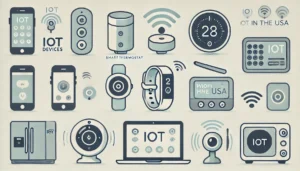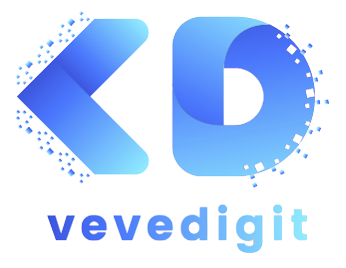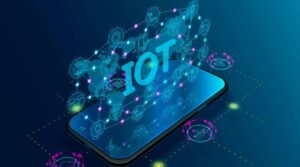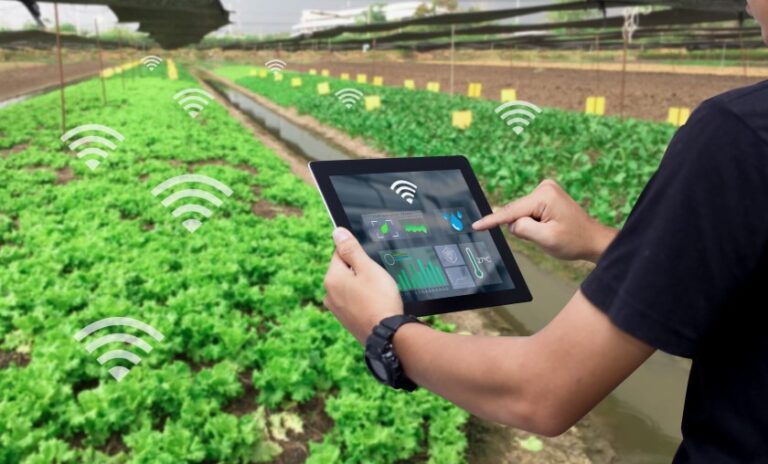The Internet of Things (IoT) has revolutionized industries, enabling devices to communicate seamlessly and gather valuable data. Small IoT devices—such as sensors, wearables, and smart home gadgets—are at the forefront, offering solutions across various sectors, from healthcare to agriculture. In the USA, where digital transformation is accelerating, developing small IoT devices has become a significant focus for both startups and established businesses. However, understanding the costs associated with developing these devices is crucial for anyone looking to enter this dynamic market.
Key Components of Small IoT Devices: Understanding What Drives Cost
Developing a small IoT device involves various components and design considerations that impact the overall cost. Key components include:
- Sensors: These capture data from the environment (e.g., temperature, humidity, motion).
- Microcontrollers and Processors: Enable data processing and decision-making within the device.
- Connectivity Modules: Allow devices to communicate, either locally (Bluetooth, Wi-Fi) or over broader networks (cellular, LPWAN).
- Power Sources: Batteries and power management systems are critical for device longevity, especially in remote IoT deployments.
Each component choice affects the final cost, with higher-performance parts typically costing more. Balancing performance and budget is key to creating a viable product.
Hardware Requirements and Expenses for IoT Device Development
Hardware is a primary cost factor in IoT device development. For small IoT devices, component costs vary significantly based on performance requirements and quality. Typical hardware costs include:
- Sensors: Prices for sensors can range from $1 for basic environmental sensors to $50+ for advanced, multi-functional sensors.
- Microcontrollers and Processors: These can range from $2 to $30 depending on computing power and energy efficiency.
- Connectivity Modules: Cellular modules are often more expensive (up to $15–$20) than Wi-Fi or Bluetooth modules (about $5–$10).
- PCB Design and Prototyping: Custom circuit board designs typically cost $100–$300 per prototype, with final production costs decreasing as quantities scale.
Manufacturers often use development boards (e.g., Arduino, Raspberry Pi) for prototyping, but transitioning to a custom PCB reduces costs in large-scale production.
Software Development for IoT Devices: A Breakdown of Costs and Challenges
Developing reliable software for IoT devices involves embedded programming, connectivity protocols, and user interface (UI) applications. Software development costs typically include:
- Embedded Software Development: This is the code within the device that processes data and controls operations, often costing between $10,000–$50,000 depending on complexity.
- Cloud Integration: Connecting to cloud platforms for data storage and processing can add another $5,000–$20,000 in development and setup costs.
- User Applications: Many IoT devices come with companion mobile or web apps, which add functionality and control options. Developing a simple mobile app can cost anywhere from $20,000 to $50,000, depending on features and platform compatibility.
The software also needs regular updates and security patches, adding to the ongoing maintenance costs of IoT devices.
Connectivity Choices and Their Cost Implications for Small IoT Devices
Choosing the right connectivity option is essential for small IoT devices, as it affects both functionality and cost. Common connectivity choices include:
- Wi-Fi and Bluetooth: Generally cheaper but limited in range, suitable for home and office environments.
- Cellular (3G, 4G, LTE, 5G): More costly but provides long-range connectivity, ideal for mobile or wide-area applications.
- LPWAN (Low Power Wide Area Network): Technologies like LoRa and Sigfox are cost-effective for low-data-rate, long-range applications.
Each connectivity choice has associated module costs, licensing fees, and operational expenses, influencing the overall cost of the device.
Prototyping and Manufacturing: Estimating the Production Costs of IoT Devices in the USA

The journey from prototype to production is a critical phase in IoT device development. Typical costs include:
- Prototyping: Initial prototypes cost between $500 and $3,000 depending on complexity and whether custom enclosures or PCBs are needed.
- Tooling and Setup for Mass Production: For injection-molded cases and assembly lines, expect to spend an initial $10,000–$50,000.
- Assembly and Testing: Assembling each unit in the USA can cost around $5–$20 per device, depending on the production scale and automation level.
Working with local manufacturers offers greater control over quality but tends to be more expensive than overseas options, although domestic production can provide a competitive advantage for time-sensitive and quality-focused markets.
Certification, Compliance, and Testing Costs for IoT Devices
In the USA, IoT devices require regulatory compliance to ensure safety and functionality. Key certifications include:
- FCC Certification: Essential for all devices that emit radio frequency, typically costing $5,000–$15,000.
- Product Safety Testing: Covers battery and device durability tests, averaging $1,000–$5,000.
- Cybersecurity Standards: As IoT devices become targets for cyber threats, adding security features and testing for vulnerabilities can cost an additional $5,000–$10,000.
These certifications not only ensure compliance with regulations but also build consumer trust, an invaluable asset in the competitive IoT market.
Data Management and Cloud Integration Expenses for IoT Solutions
Cloud platforms are integral to IoT devices, enabling data storage, analysis, and remote control. Cloud integration costs can include:
- Data Storage and Bandwidth: Cloud providers like AWS, Microsoft Azure, and Google Cloud typically charge by data volume, averaging $500–$2,000 monthly for small-scale IoT deployments.
- Data Processing and Analytics: Advanced analytics for real-time data processing can add to the monthly costs, depending on the level of data insight required.
- IoT Platform Licensing Fees: Some cloud platforms offer specialized IoT services, which come with additional subscription fees.
Data management costs are recurring, meaning they’ll be a permanent part of the budget for IoT devices that rely on cloud functionality.
Additional Costs: Maintenance, Support, and Marketing for IoT Devices
Beyond development, small IoT devices require ongoing support and marketing to succeed in the marketplace. Consider these costs:
- Maintenance and Updates: Regular updates are essential to fix bugs and improve security. Expect to allocate 10–20% of the development budget annually for maintenance.
- Customer Support: As users encounter issues, providing support can cost $20,000+ annually, depending on the size of the user base.
- Marketing and Distribution: To promote an IoT device, online ads, social media campaigns, and distribution channels may require an additional $10,000–$30,000 in marketing efforts.
Investing in user support and marketing helps establish a brand and ensures that customers remain satisfied with the product.
Tips to Minimize Costs and Optimize IoT Device Development in the USA
Creating a cost-effective IoT device in the USA is achievable with careful planning. Consider these strategies:
- Use Off-the-Shelf Components: Where possible, use readily available parts to save on custom manufacturing costs.
- Develop in Stages: Start with a Minimum Viable Product (MVP) to test the market, then scale up features as needed.
- Leverage Open-Source Software: Open-source platforms can reduce software costs, especially for cloud integration and analytics.
- Partner with a Local IoT Accelerator or Incubator: These programs often provide resources, funding, and expertise, which can reduce initial development costs.
Cost optimization strategies can help small businesses and startups enter the IoT market without overwhelming budgets.
Conclusion: Projected Costs and Future Trends for IoT Device Development in the USA
Developing small IoT devices in the USA involves various costs, from hardware and software to compliance and marketing. By carefully selecting components, optimizing software development, and planning for scalability, developers can bring products to market more cost-effectively. As IoT technology advances, the development costs for small devices may decrease, with new solutions and cost-effective options emerging to support growing demand.
Looking forward, the cost of developing IoT devices may continue to decrease as technology becomes more accessible and streamlined. Businesses that focus on strategic cost management and innovation can thrive in the expanding IoT landscape, positioning themselves for success in the years to come.





